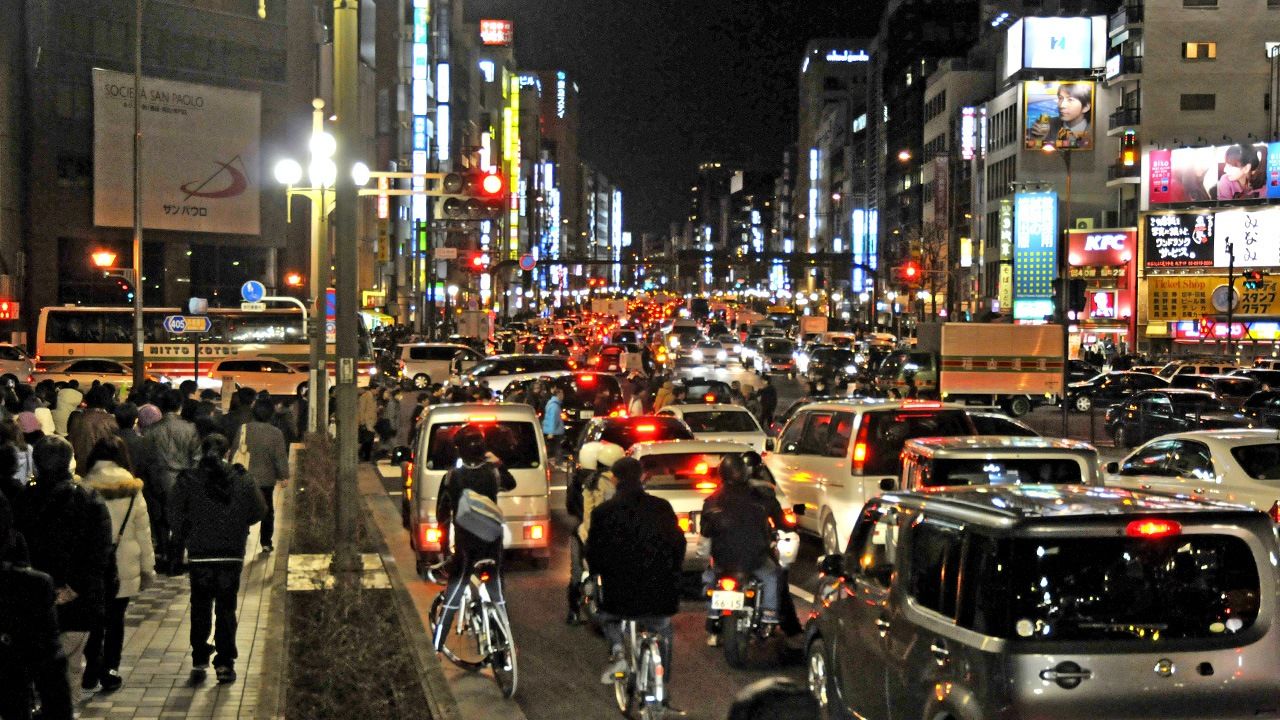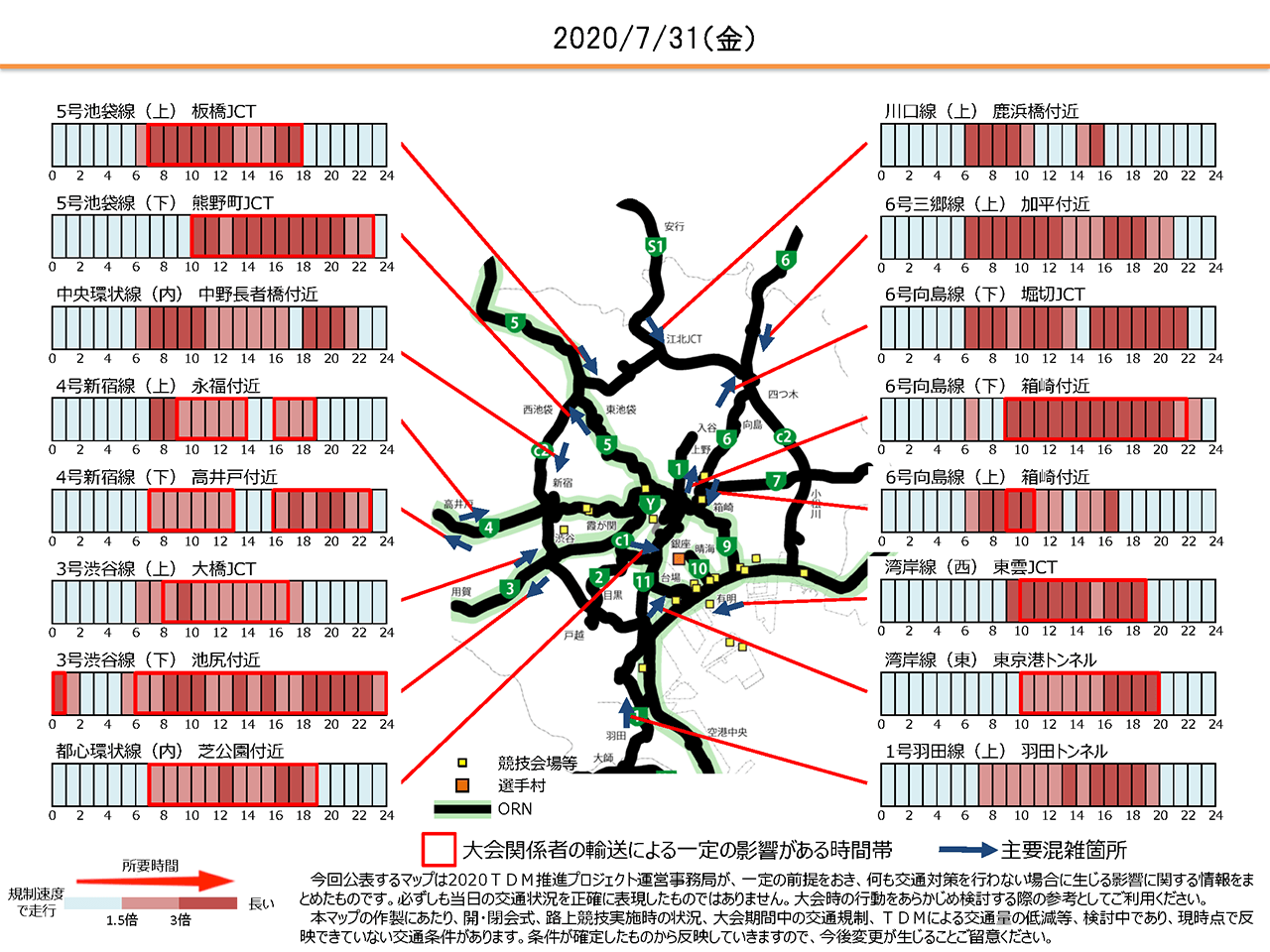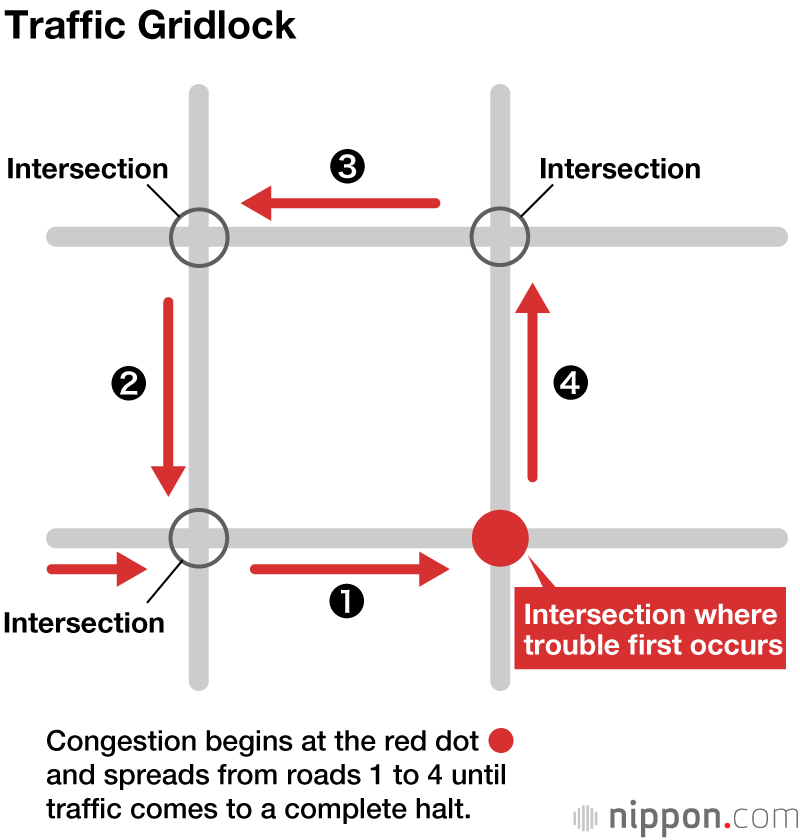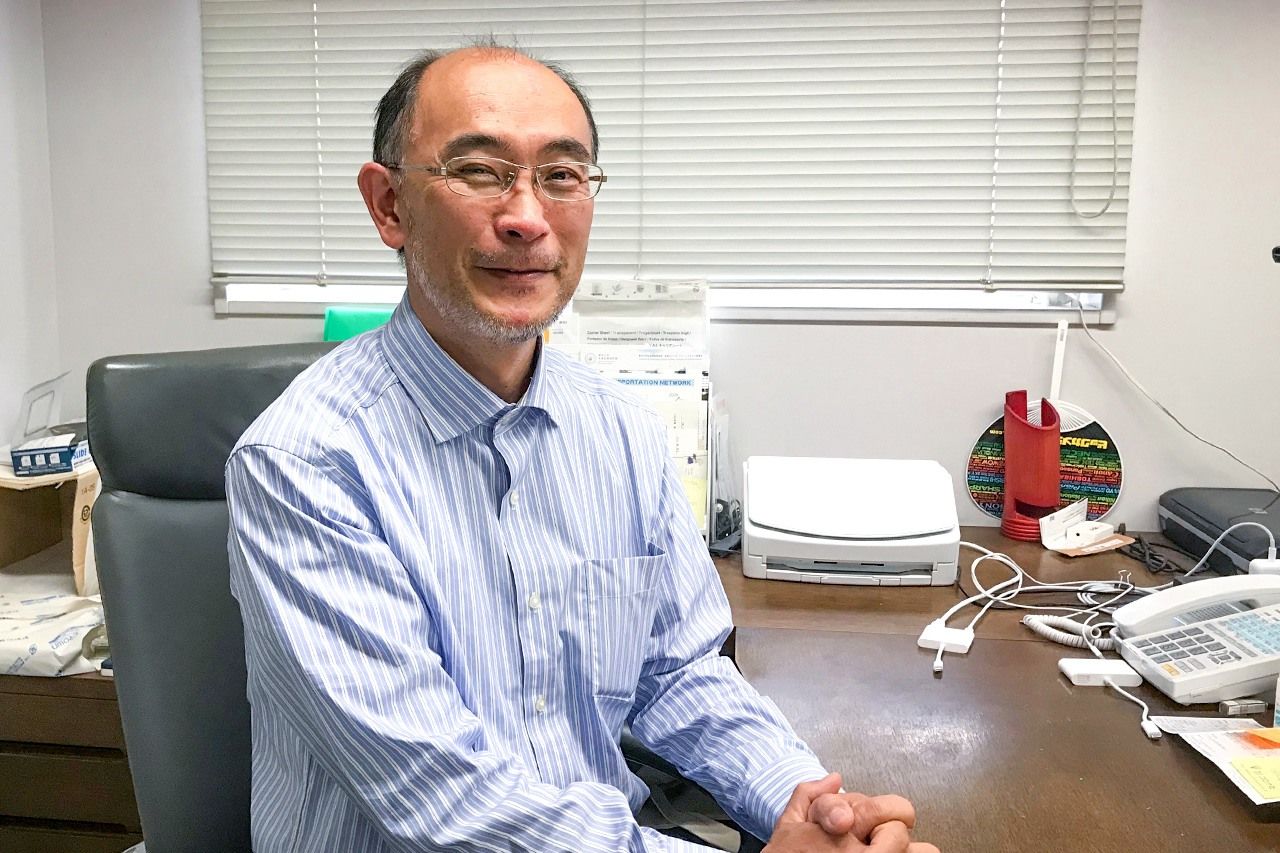
Counting Down to the 2020 Olympics and Paralympics
Tokyo Faces a Gridlock Nightmare at the Olympic and Paralympic Games
Society Sports- English
- 日本語
- 简体字
- 繁體字
- Français
- Español
- العربية
- Русский
Impact on Transportation Infrastructure
The Tokyo Bureau of Olympic and Paralympic Games has on its website a map showing the impact the events are expected to have on Tokyo’s transportation infrastructure if no special mitigating measures are taken.
The map for July 31, 2020, shows what traffic on a typical day during the games will be like. Between 9 am and 9 pm, vehicles traveling at the speed limit are expected to take over three times as long as normal to transit around Hakozaki in the heart of the metropolis on the outbound lanes of the Shuto Expressway’s Mukōjima Line. A similar scenario is expected to play out on almost all 16 areas shown on the map, including crucial arteries like the inbound lanes of the Ikebukuro Line near Itabashi Junction and outbound traffic around Ikejiri on the Shibuya Line.
Many public roads are also expected to be congested, with traffic predicted to slow by almost a third its normal rate throughout the day. The situation will be especially bad in the Tokyo Bay zone where several Olympic venues and facilities are located. The outlook is similarly dismal for rail transportation, with stations near the Olympic Stadium and the Yurikamome Line linking Shinbashi and the Tokyo Bay zone likely to see heavy crowding.

The Tokyo Metropolitan Government’s Olympic road congestion map shows times on July 31, 2020, when heavy congestion (indicated by the red bars) is expected on the Shuto Expressway network. The map is current as of June 15, 2019.
However, these are not the only transportation-related issues that officials are worried about.
According to Yamamoto Masashi, former head of the Metropolitan Police’s transportation department and adviser to the Cabinet Office’s bureau for promoting security at the Olympics, authorities are deeply concerned about gridlock. During a May 2018 meeting of the Cabinet Office’s committee for promoting smooth traffic flow, Yamamoto warned that gridlock on a scale similar to that experienced directly following the Great East Japan Earthquake on March 11, 2011, could occur. Gridlock is when traffic backs up from one intersection to the next so that the line of vehicles cannot move forward. In such a situation, traffic lights become useless and it may require several hours for the situation to clear up. Furthermore, Yamamoto expressed grave concern that gridlock like that on March 11 could materialize around venues due to heavier than normal traffic and priority lanes for Olympic officials and athletes restricting the flow of vehicles.
How Gridlock Happens
We asked traffic management and control expert Professor Ōguchi Takashi of the University of Tokyo’s Institute of Industrial Science about how gridlock occurs.
Ōguchi says that gridlock occurs when an accident or other trouble causes traffic to back up at multiple intersections. “Strictly speaking, gridlock is when the line of vehicles extends around the block to the intersection where the traffic jam first started,” he explains. “The vehicles at the front can’t move while those behind creep forward, producing a vicious circle that brings traffic to a complete standstill. When this happens, it’s called deadlock.”
However, he asserts that full-fledged gridlock occurs only in very unusual circumstances. Streets usually offer drivers alternate routes around congested areas, but special conditions immediately after the quake brought traffic to a standstill.
“The earthquake struck shortly before 3 pm, stopping trains and subways and forcing people to walk home from schools and work,” Ōguchi recounts. “Crowds spilled onto roads, preventing drivers from turning onto side streets. The lines of vehicles kept getting longer, stretching from light to light. This occurred in multiple areas, snarling traffic and creating a huge back-up.”
Tokyo Lacks Efficient Roads
Ōguchi offers this likely scenario for Tokyo’s roads during the Olympic Games: “In Japan, the basic approach has been to decide the minimum number of lanes needed to keep traffic flowing smoothly. Roads where all lanes are fully occupied and vehicles are moving along are considered efficient, but that kind of crowding is very stressful for drivers. With priority lanes set aside for Olympic-related vehicles, ordinary traffic will have to make do with the remaining lanes, and congestion is bound to occur. If road access is restricted in areas around the Olympic Stadium, such as to allow athletes and officials through, roads leading to the stadium will become congested, causing traffic jams. And if the same thing happens on other nearby roads, it might produce a similar type of gridlock as on March 11.”
This raises the question of what can be done to mitigate potential problems.
“Traffic jams in Tokyo are often due to business activity, for example sales calls or deliveries,” says Ōguchi. “However, stopping companies from using the roads during the games would hurt the economy, so traffic-reduction steps are needed to prevent roads from becoming over congested. For example, merchants who usually stock a day’s worth of merchandise might instead order three days’ worth or shift their usual delivery times from morning to night. Asking businesses to cooperate will help reduce traffic in Tokyo during peak hours.”
Authorities are considering measures to manage traffic volume during the Olympics by changing delivery routes and schedules and asking private citizens to request parcel deliveries at different times than usual. There is also a proposal to cut Shuto Expressway tolls by 50% from midnight to 4 am and impose a ¥1,000 surcharge between 6 am and 10 pm.
Businesses can save themselves headaches by planning ahead. However, a March survey by the Tokyo Chamber of Commerce and Industry of its members revealed that while 5% of respondents had started thinking of logistics-related measures for deliveries and other business activities, 44.3% answered that while they realized they should be making plans, they had not done so yet.
A Legacy from the Olympics
As Tokyo’s experience after the March 11 earthquake demonstrates, masses of people trying to return home all at once is a recipe for chaos. “Normally, there are two ways of relieving congestion over road networks prone to traffic jams,” Ōguchi explains. “One is for vehicles to use different routes where traffic is lighter. However, side roads aren’t always clear of traffic, and even if they are, driving around congested areas means vehicles will be on the road for longer periods. In addition, other traffic problems could occur that worsen the situation. The other way is time-shifting, which would be much more effective for reducing congestion around event starting and ending times when traffic is likely to increase. If traffic flow can be dispersed over a longer period of time, there’s a good chance that congestion can be avoided.”
Ōguchi also recommends that people work online or from home and avoid going to the office while the games are on. “This is a great opportunity to address the high concentration of businesses in Tokyo. We should not just be encouraging people to work from home but also advising firms to use branch offices in other cities. I would even suggest that businesses think of shutting down their Tokyo headquarters during the Olympics. This would be a good test run to prepare for a major earthquake hitting the capital. If companies don’t see sales drop even if their Tokyo headquarter are closed, it would demonstrate the strength of the Japanese economy.”
Accidents or poor weather can easily disrupt rail services, forcing commuters to wait in long lines for taxis or buses. Ōguchi insists that there is a good chance of this occurring during the Olympics and stresses that authorities be prepared. “Whether it’s road or rail, the first thing to do when there’s an accident is to quickly and accurately determine what is happening,” he declares. “Creating a better system of relaying traffic details and other information in real-time could be a technological legacy of the Olympics. In cases where rail operators grasp the situation but there is not enough alternative transportation available, companies can hold a public viewing of the Olympics to keep the overflow of people occupied while they wait for things to return to normal.”
During the Olympics, people going about their daily business should keep abreast of traffic conditions and avoid periods of peak congestion. To keep from being stuck in traffic, they should avoid traveling in Tokyo as much as possible. In fact, the best solution may be to stay home and watch the Olympics and Paralympics on television.
(Originally written in Japanese. Reporting and text by Kuwahara Rika of Power News. Interview photos by Imamura Takuma. Banner photo: Traffic comes to a standstill near Yotsuya in Tokyo after the Great East Japan Earthquake on March 11, 2011. © Jiji.)

